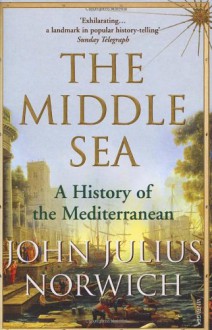Artificial blood vessels, also known as vascular prostheses, the main material of artificial blood vessel include: EPTFE, Polyethylene Terephthalate, Polyurethane and so on. The main function of artificial blood vessels can replace the pumping blood. Now mainly used for replacement of aorta, the role of artificial blood vessels are connected the two ends of blood vessels, the blood circulation to recover.
The current artificial blood vessels are mostly polyester fibers or PTFE fibers woven into the corrugation of the tube has certain porosity. It implanted in the body which can form a layer of fake endometrial. Due to avoiding coagulation and thrombosis, it’s a better solution to the problem of preventing thrombosis. An organism that can be absorbed by the material emerging nonabsorbable material and crosswoven, or on the large pore fabric coating absorbable material e.g. collagen fibers of the artificial blood vessel, it is easy to fake endometrial growth acceleration effect better.
Artificial Blood Vessel is a substitute of vascular. It was developed successfully and begins clinical application in the 1950s. Artificial blood vessel requirements include stable physical and chemical properties; mesh suitable degree; have a certain strength and flexibility; easy to sew bypass surgery when making good; no bleeding or oozing blood when small blood vessels and can be turned on instantly stop; after Implantation of human tissue reactions were mild; human tissue can rapidly form the inner and outer membrane newborn; difficult thrombosis; and satisfactory longterm patency. Currently EPTFE, Polyethylene Terephthalate and Polyurethane are used in the manufacture of an artificial blood vessel which is widely used in aortic disease, peripheral vascular disease and hemodialysis.
Consider the global manufacture of Artificial Blood Vessel, Europe and the United States is the major producing regions, the main production companies are concentrated in this area, such as Maquet, Terumo, Gore, B. Braun, Bard, Jotec GmbH, LeMaitre Vascular, Perouse Medical and Nicast. The total production of artificial blood vessel 168450 units in US, whose occupies above 55.69% of total production in 2015. 117300 units were produced in Europe, accounting for more than 38.78% in 2015. 1730 units were produced by Chinese native manufacture in 2015.
The main production areas and consumption areas are concentrated in the United States and European. US and Europe consumption is about 37.50% and 33.26%. The market is mature and stable. Chinas consumer market share continues to expand. The United States is the worlds largest export country, China is still depends on import.
The global Artificial Blood Vessel market is valued at xx million US$ in 2018 and will reach xx million US$ by the end of 2025, growing at a CAGR of xx% during 20192025. The objectives of this study are to define, segment, and project the size of the Artificial Blood Vessel market based on company, product type, end user and key regions.
This report studies the global market size of Artificial Blood Vessel in key regions like North America, Europe, Asia Pacific, Central & South America and Middle East & Africa, focuses on the consumption of Artificial Blood Vessel in these regions.
This research report categorizes the global Artificial Blood Vessel market by top players/brands, region, type and end user. This report also studies the global Artificial Blood Vessel market status, competition landscape, market share, growth rate, future trends, market drivers, opportunities and challenges, sales channels and distributors.
The following manufacturers are covered in this report, with sales, revenue, market share for each company:
Maquet Cardiovascular
Terumo Group
Gore
B. Braun
Bard
Jotec GmbH
LeMaitre Vascular
Perouse Medical
Nicast
ShangHai CHEST
SuoKang
Market size by Product
EPTFE
Polyethylene Terephthalate
Polyurethane
Others
Market size by End User
Aortic Disease
Peripheral Artery Disease
Hemodialysis
Market size by Region
North America
United States
Canada
Mexico
AsiaPacific
China
India
Japan
South Korea
Australia
Indonesia
Singapore
Malaysia
Philippines
Thailand
Vietnam
Europe
Germany
France
UK
Italy
Spain
Russia
Central & South America
Brazil
Rest of Central & South America
Middle East & Africa
GCC Countries
Turkey
Egypt
South Africa
The study objectives of this report are:
To study and analyze the global Artificial Blood Vessel market size value & volume by company, key regions, products and end user, breakdown data from 2014 to 2018, and forecast to 2025.
To understand the structure of Artificial Blood Vessel market by identifying its various subsegments.
To share detailed information about the key factors influencing the growth of the market growth potential, opportunities, drivers, industryspecific challenges and risks.
Focuses on the key global Artificial Blood Vessel companies, to define, describe and analyze the sales volume, value, market share, market competition landscape and recent development.
To project the value and sales volume of Artificial Blood Vessel submarkets, with respect to key regions.
To analyze competitive developments such as expansions, agreements, new product launches, and acquisitions in the market.
In this study, the years considered to estimate the market size of Artificial Blood Vessel are as follows:
History Year: 20142018
Base Year: 2018
Estimated Year: 2019
Forecast Year 2019 to 2025
This report includes the estimation of market size for value million US$ and volume K Units. Both topdown and bottomup approaches have been used to estimate and validate the market size of Artificial Blood Vessel market, to estimate the size of various other dependent submarkets in the overall market. Key players in the market have been identified through secondary research, and their market shares have been determined through primary and secondary research. All percentage shares, splits, and breakdowns have been determined using secondary sources and verified primary sources.
For the data information by region, company, type and application, 2018 is considered as the base year. Whenever data information was unavailable for the base year, the prior year has been considered.

 Log in with Facebook
Log in with Facebook 
















